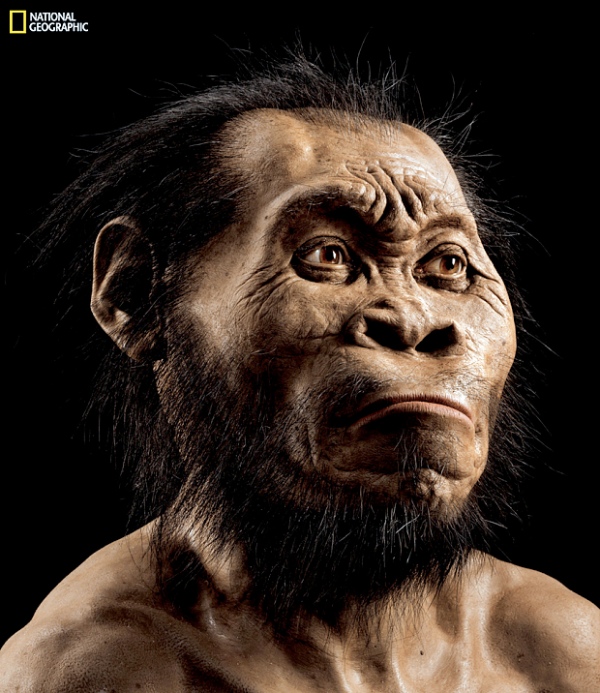

Follow us on:  
|


A reconstruction of Homo naledi’s face by paleoartist John Gurche [Image: NATIONAL GEOGRAPHIC
Details of the significant fossil discovery, called Homo naledi, was kept secret for years and was unveiled at the UN heritage site called the Cradle of Humankind in Maropeng, South Africa on Thursday.
The discovery of this new species was announced by South Africa’s University of the Witwatersrand, the National Geographic Society, the Department of Science and Technology (DST) and the National Research Foundation of South Africa (NRF).
Scientists have deduced this species buried its dead – a trait previously believed to be uniquely human.
The startling discovery was made in a deep cave near the famed sites of Sterkfontein and Swartkrans, 50 kilometers northwest of Johannesburg in November 2013, and included 1,550 fossil elements of 15 infants and adults.
The team of international scientists led by Professors Lee Berger, Paul Dirks and John Hawks, involved in this project, said this major discovery “will force the world to re-think what it means to be human”.
Homo naledi had a tiny brain, about the size of an average orange, perched atop a very slender body, according to the researchers at the University of the Witwatersrand.
The new species has been named ‘Homo naledi’, in honour of the “Rising Star” cave where it was found. Naledi means “star” in South Africa’s Sesotho language.
“Until this discovery we thought that ritualised behaviours directed towards the dead, things like burial, was totally unique to home sapiens. It perhaps in fact identified us. We have now seen a species with the same capacity and that is an extraordinary thing,” said Prof. Lee Berger at the University of Witwatersand.
South African Deputy President Cyril Ramaphosa said “research in the Cradle of Humankind will yield yet more information for decades to come”.
“Maropeng was opened almost 10 years ago. At the time we said that this would become an iconic place, a place of pilgrimage, a place belonging to the people of South Africa, Africa and the world, the place where our collective umbilical cord is buried. We did not imagine then that a new species would be unearthed telling us more about our human journey than we knew before,” said Ramaphosa in a message congratulating the scientists who studied the treasure trove of fossils.
Twitter was abuzz with reactions after the announcement:
https://twitter.com/EllaBellaBleu/status/641899789538467840
https://twitter.com/harrythehominid/status/641895975796232192
Historic discovery at #Maropeng. Fantastic news for SA. Excellent for tourism…now we must just make it easier for people to travel to SA.
— Clayson Monyela (@ClaysonMonyela) September 10, 2015
TBP and Agencies